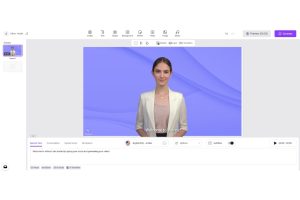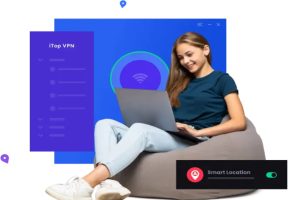Creating Personas: The Key To Successful Targeting

Personas are fictional representations of your target group based on data and research results. They allow you to understand your customers better and develop personalized marketing strategies that engage and retain your target audience.
In this article, we will examine the most important steps for creating personas, offer valuable tips and tricks for creating personas, and show how personas can be used in online marketing. So, let’s get started!
Table of Contents
Why Are Buyer Personas Important In Online Marketing?
Personas are important in online marketing because they help you understand your target groups better. By creating personas, you can identify the needs, interests, and behavior patterns of your potential customers. This allows you to tailor your marketing strategies to the needs of your target groups and, therefore, make them more effective.
By using personas, you can also develop more targeted and personalized marketing campaigns. For example, you can create specific offers, advertising messages, or content that are tailored to the needs and interests of a specific persona. This increases the likelihood that your message will reach your target group and achieve more conversions.
Personas can also be helpful when developing products or services. They help you understand the needs of your potential customers and incorporate them into your product development. This ensures that your products or services meet the requirements of your target group and are, therefore, more successful.
In summary, using personas in online marketing is an important step in better understanding your target groups and developing more targeted and personalized marketing campaigns. This allows you to make your marketing strategies more effective and increase your conversions.
Step 1: Collect And Analyze Data
Creating personas in online marketing involves collecting and analyzing data about the target group. Various methods can be used to collect the most comprehensive and meaningful information possible.
One option is to conduct surveys that ask potential customers about their needs, interests, and behavior patterns. Evaluating customer feedback and ratings can also provide valuable information.
Other data sources can include social media analyses, web analysis tools, or market research studies. Demographic characteristics such as age, gender, level of education, and income should also be taken into account in order to create the most accurate target group analysis possible.
After the data has been collected, it should be analyzed and structured. Target group segments with similar needs, interests, or behavioral patterns can be identified. These segments form the basis for creating persona profiles in step3.
Step 2: Identify Audience Segments
Step 2, when creating personas in online marketing, is identifying target group segments based on the collected and analyzed data. Similarities and differences between the data points should be identified in order to divide the target group into different segments.
An example of a possible division could be that a target group consists of different age groups that have different interests and needs. For example, young adults (18-25 years old) may have different priorities than seniors (65+ years old).
The division into target group segments makes it possible to address the different needs and interests more specifically and to respond to customers more individually. Overall, identifying target group segments is an important step in enabling differentiated persona creation and, thus, developing more targeted marketing strategies.
Step 3: Create Personas
A persona profile is a fictional personality that represents the typical characteristics and needs of a specific target group or customer segment. When creating personas, the profile is assigned not only demographic characteristics but also other information such as interests, hobbies, behavioral patterns, purchasing behavior, and communication channels.
To create a persona profile, the collected and analyzed data from steps 1 and 2 should be used. Personal experiences and observations of customer contacts can also be included.
Step 4: Refine Personas
In order to refine the persona profiles, further information and experiences should be collected. For example, customer surveys or interviews can be used to gain further details and insights.
Refining persona profiles can help make the marketing strategy even more targeted and understand the needs of the target group even better. The profiles should then be prioritized when creating personas. For example, the relevance or size of the target group can play a role.
It can also be useful to define a main persona and a few secondary personas. The main persona represents the most important and largest target group, while the secondary personas represent more specific target groups.
Prioritizing profiles when creating personas makes it possible to use resources and marketing measures more specifically and increase the effectiveness of the strategy. So refining and prioritizing persona profiles is an important step in developing a successful and targeted marketing strategy and ensuring that resources are used effectively.
How Can Buyer Personas Be Used?
Personas can be used in different ways in online marketing. Here are some options:
- Content strategy: Personas can be used to create content tailored to the needs and interests of the target audience. This can be blog articles, videos, social media posts, and other types of content.
- Social media marketing: Personas can also be used to plan and execute social media campaigns. For example, ads and posts can be created that are tailored to the interests and needs of the target group.
- Email marketing: Personas can be used to create email campaigns that contain personalized content and are specifically tailored to the needs of the recipients.
- Search engine optimization (SEO): Personas can also be used to optimize the website and content for search engines. For example, keywords and topics that are relevant to the target group can be identified.
- Product development: Personas can also be used to tailor the development of products or services to the needs and interests of the target group.
Overall, personas can help develop an effective and targeted marketing strategy that is aligned with the needs and interests of the target group.
Tips & Tricks For Creating Personas
Here are some tips and tricks for you when creating personas:
- Use data and research: Collect data about your target audience to understand their interests, needs, behavior patterns, and problems. This can be done through surveys, interviews, web analytics, social media analysis, and market research reports.
- Uses real people: Personas should be based on real data and interviews, not guesses or assumptions. Create personas using real people, using their names, photos, and other demographic data to make them vivid and realistic.
- Segment your audience: Identify different segments of your audience that have different needs and behavior patterns. Then creates different personas to represent these segments.
- Focused on Goals and Challenges: Ensures each persona has clear goals and challenges to understand their needs and problems and provide targeted solutions.
- Prioritize your personas: Determine which personas are most important to your company based on their size, revenue growth potential, and strategic importance.
- Use personas in all areas: Use personas to shape your marketing strategy but also to optimize your products, customer service, and other aspects of your business.
- Update your personas regularly: Update your personas regularly to ensure they match the current needs and behaviors of your target audience.
- Use tools to create personas: The persona maker from Hubspot, for example, is suitable for this.
Checklist For Creating Personas
- Collect and analyze data: Collect and analyze data about your target audience to understand their interests, needs, behavior patterns, and problems.
- Identify audience segments: Identify different segments of your audience that have different needs and behavior patterns.
- Create Persona Profiles: Create persona profiles that contain detailed information about your audience, including demographics, behavior patterns, interests, and challenges.
- Refine and prioritize personas: Based on the data you collect, refine your personas and prioritize them based on their size, revenue growth potential, and strategic importance.
- Use personas: Use your personas to shape your marketing strategy and develop personalized offers and solutions for your customers.
- Updating Personas: Regularly update your personas to ensure they match the current needs and behaviors of your audience.
By using these steps, you can create personas that help you better understand your audience and develop personalized marketing strategies and offers that engage and retain your customers.
Also Read: Marketing KPI: Key Indicators To Follow In Your Inbound Strategy
Conclusion: Create Personas
Personas are fictional representations of your target group based on data and research results. They are important for better understanding your target group, developing personalized marketing strategies, and building customer loyalty.






